Japanese maples always catch my eye. The foliage, the colors, the stature – everything about them is unique and they make beautiful additions to the garden.
So it’s extra disappointing when they’re plagued by pests.
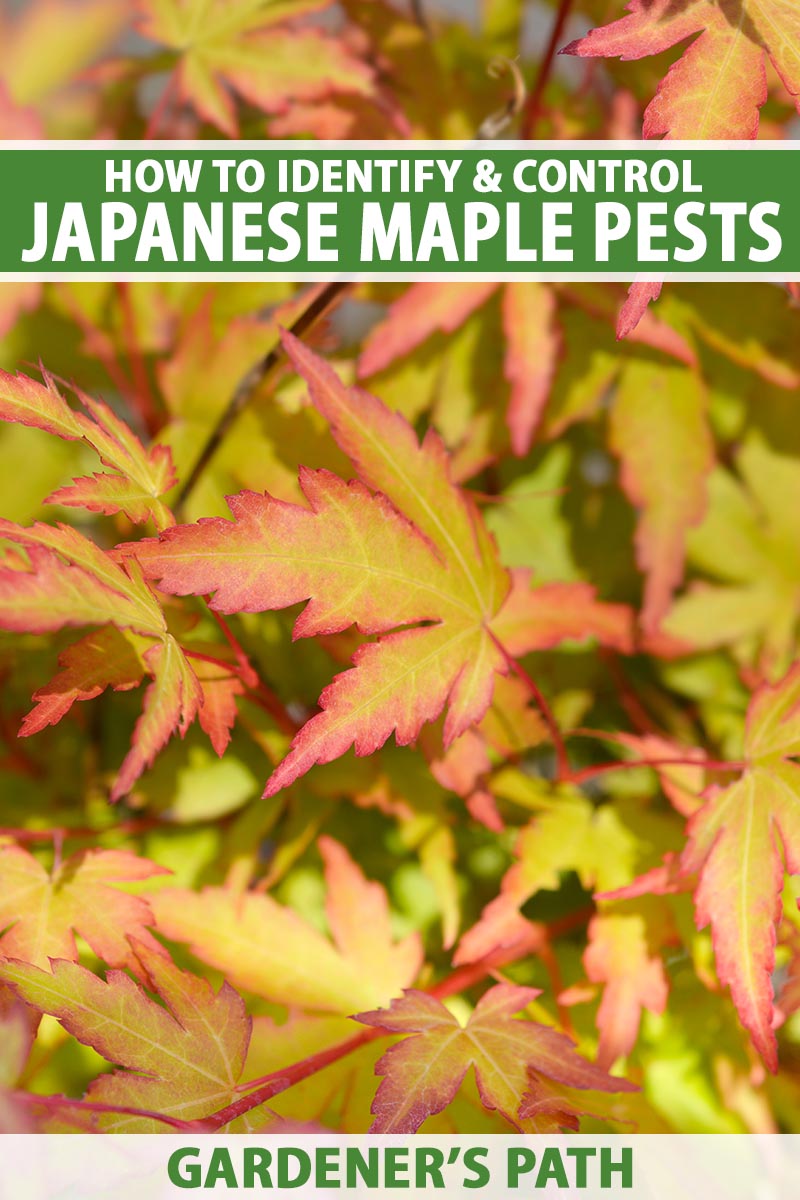
We link to vendors to help you find relevant products. If you buy from one of our links, we may earn a commission.
I suppose part of my personal fascination with these plants is due to the fact they won’t survive in my cold growing zone, so I can’t have one in my own landscape.
The few years when I did live in a region with a climate they were able to withstand, I would drool over each one that I saw, happily thriving in yards and botanical gardens.
But I did also notice I wasn’t the only creature that was attracted to these trees…
A variety of insects can be found hanging around from time to time, but they tend to do more than just admire the foliage.
Luckily, we’ve got everything you need to know about what types of pests might attack your Japanese maples, including details on how you can deal with them!
Here’s what we’ll cover:
How to Manage Common Japanese Maple Pests
1. Aphids
Aphids are always at the top of the list of pests that you can find on nearly any plant. These pretty trees are no different, and a variety of aphid species love to hang out and suck on them.
Aphids are soft-bodied insects with two visible tailpipes, and they may be seen in a range of colors. Most exhibit shades of brown or green.
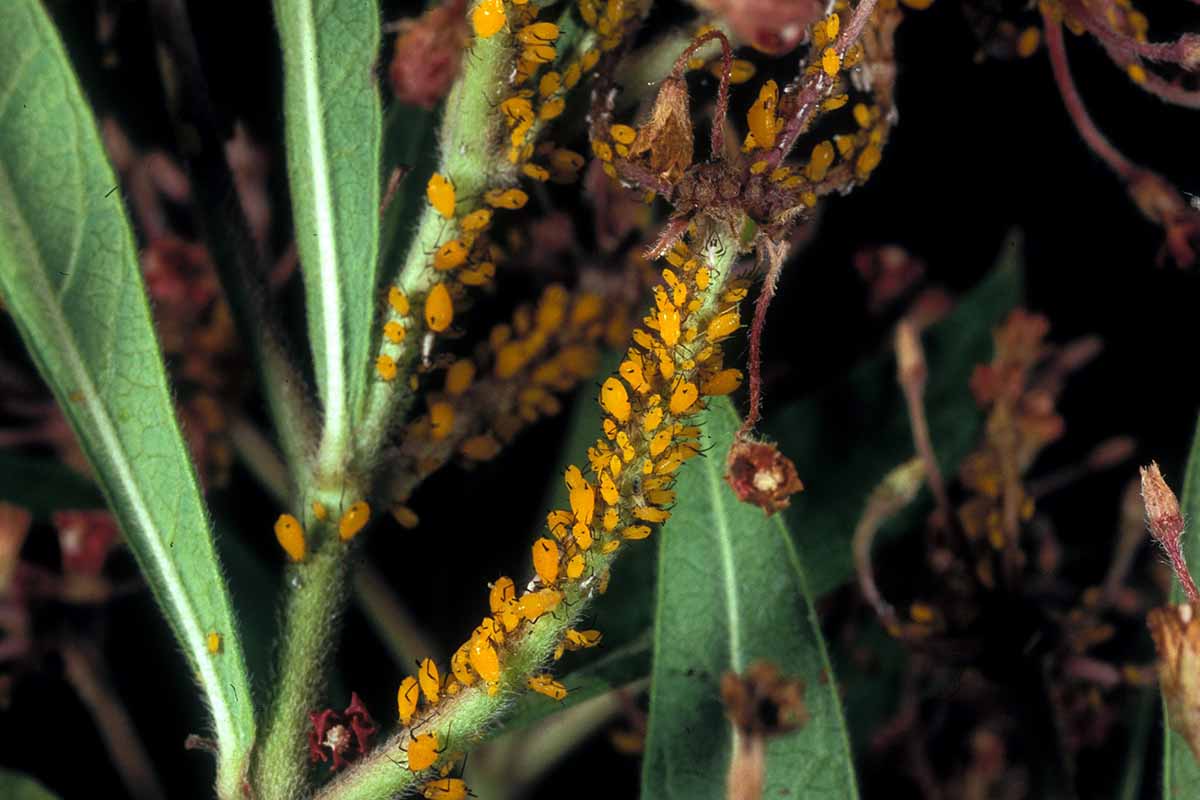
They’re quick to reproduce, and able to do so even if males aren’t present.
They might look slow and defenseless, but if populations grow significantly, winged adults are produced to facilitate further spread, and ants will tend them to keep predators away in exchange for the honeydew they produce.
The damage they cause is mainly aesthetic, as their feeding may lead to leaf curling, and the honeydew they exude attracts a black sooty mold that doesn’t add to the feathery beauty of this easily recognizable tree. Constant feeding can also weaken plants and act as an entry for diseases.
Ladybugs, parasitic wasps, and lacewings all attack aphids, and local populations of these beneficial insects can be preserved by avoiding chemical pesticides.
In order to get rid of aphids yourself, spray the leaves with a strong stream of cold water to wash them off the plants.
Insecticidal soaps or horticultural oil sprays can also help if beneficial insects or cold showers don’t seem to be doing the trick.
Bonide Insecticidal Soap, available at Arbico Organics, is a product that works well. These types of products do require good coverage to be effective and repeat applications are often necessary.
2. Beetles
Japanese beetles (Popillia japonica), granulate ambrosia beetles (Xylosandrus crassiusculus), and vine weevils (Otiorhynchus sulcatus) are all types of beetles that might attack these delicate, attractive maples.
Japanese beetles are oval-shaped insects that are very easy to identify, thanks to their metallic rust and green colors, with white hair tufts lining the sides of their abdomens.
They chew on the leaves and can completely skeletonize them. If there is enough damage the leaves can turn brown and drop, and the tree is subsequently weakened.
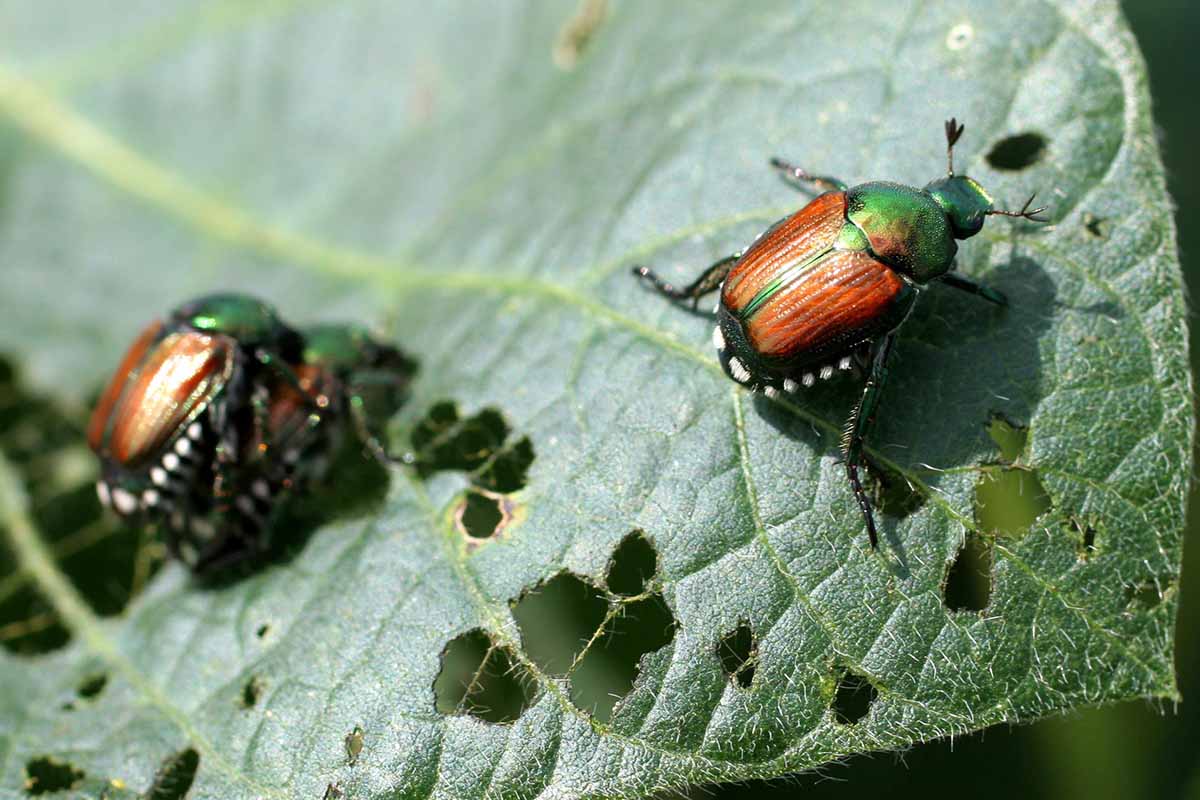
Granulate ambrosia beetles (formerly known as Asian ambrosia beetles), are small red-brown borers with hunched backs.
They are attracted to already weakened trees and they bore into thin bark, leaving pencil-lead-sized holes behind. Sometimes you’ll see strands of boring dust – as if the tree just squeezed a pimple – protruding from the plant as well.
Not only do the females excavate tunnels in the wood to lay their eggs inside, but they also transmit ambrosia fungi, and create excellent entry points for other pathogens as well.
Vine weevils are small black beetles with the typical snout nose of these insects and indented elytra (wing covers).
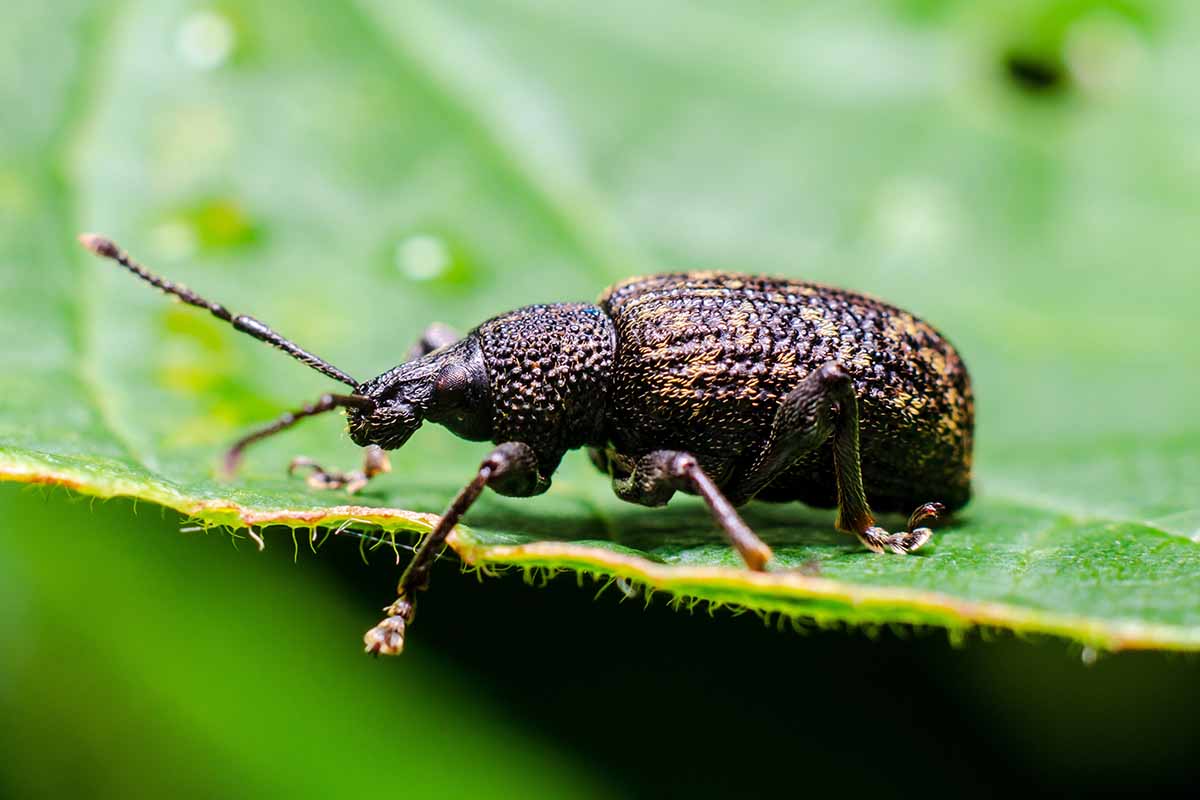
They chew D-shaped notches in the leaf edges. But the larvae – creamy-colored, C-shaped grubs with red heads that inhabit the soil – are the real problem. They are root feeders, and their snacking can leave a plant weak, or dead.
Beetle larvae are hard to target, and each of three types described above remain hidden in the soil or in the wood of infested trees.
Apply pesticides at the first sign of feeding damage, targeting the adults. AzaGuard, available at Arbico Organics can be applied to the plant surfaces for the beetles to ingest as they feed, poisoning them.
For vine weevils and Japanese beetles, whose larvae live in the soil, beneficial nematodes can be applied as a soil drench.
Combo packs of Steinernema carpocapsae and Heterohabditis bacteriophora are available at Arbico Organics.
Simply mix with water according to package instructions and apply to the soil around your tree.
For controlling ambrosia beetles, keeping the tree as healthy as possible is the easiest way to prevent damage. Pyrethroids can be applied while the beetles are active.
Try PyGanic, available at Arbico Organics, if you don’t want to use synthetic pyrethroids and your tree is too weak to deal with any additional damage from these pests.
3. Caterpillars
A variety of caterpillars are attracted to Japanese maples, including leafrollers.
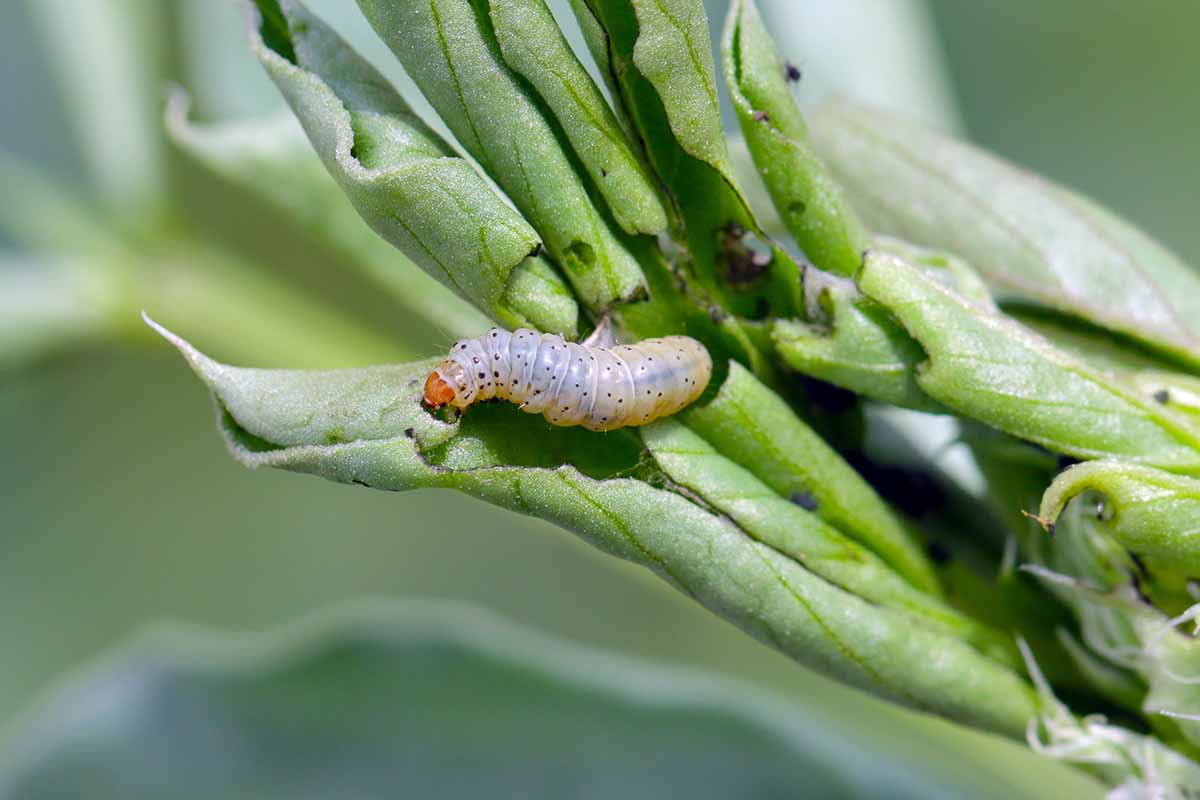
They chew through the foliage, creating holes in the middle and around the edges of leaves.
Other indications that you might be dealing with caterpillars include white webbing and chunky droppings known as frass, and in the case of leaf rollers, curled leaves.
Most of the time, caterpillar feeding is merely ugly. Too much caterpillar feeding, however, can inhibit plant growth or even kill young plants.
You can choose to handpick any butterfly or moth larvae that you see, or apply a Bacillus thuringiensis product to manage infestations.
Try Bonide Thuricide, available at Arbico Organics.
The caterpillars need to chow down on leaves covered in it in order for the product to work, so apply it to all leaf surfaces. It will take a few days before they begin to die off.
You can also try a spinosad product such as Monterey Garden Insect Spray, available at Arbico Organics.
4. Mealybugs
Mealybugs are light gray to white insects, often covered in powdery white wax. They have filaments along the edge of their bodies, and some even have tails.
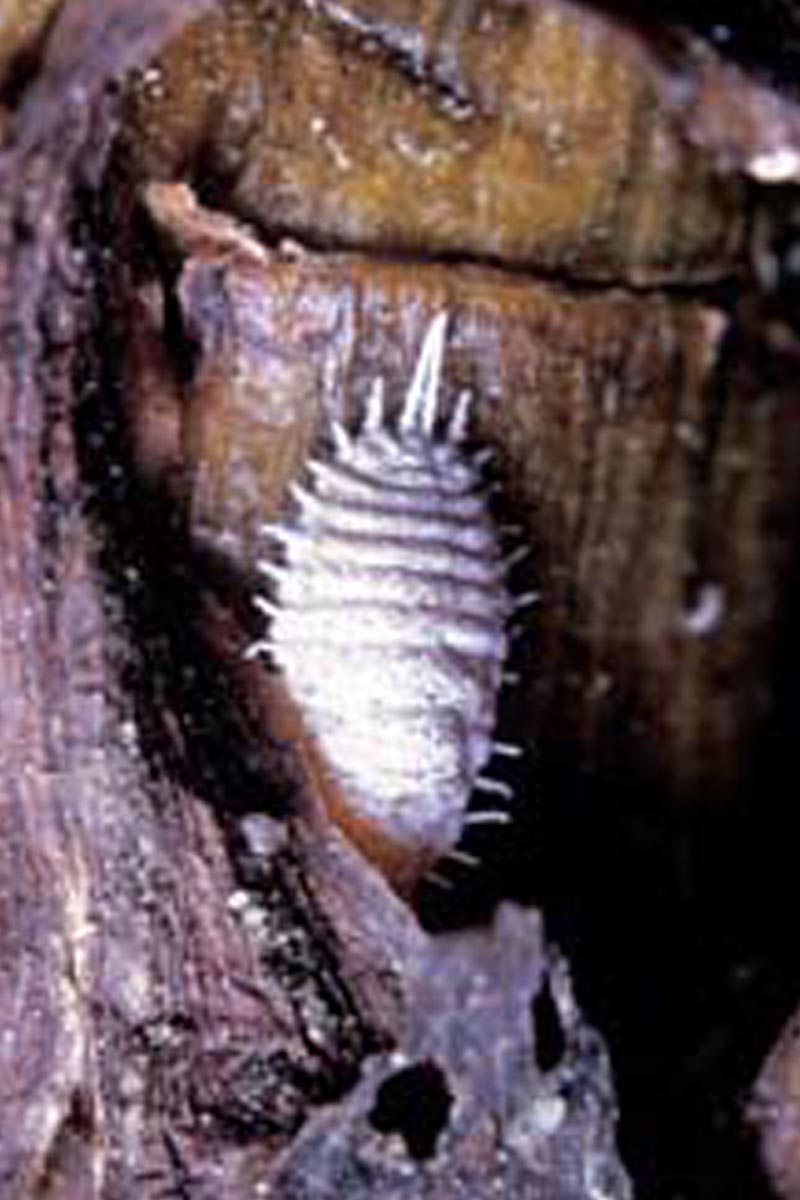
They are especially attracted to splits in the bark and other wounds, and they suck the sap of the tree when they feed. Like aphids, they also excrete honeydew.
If there are a lot of them feeding in one area, they can cause galls to form. So between the insects themselves, the galls, and the sooty mold that can grow on the honeydew they excrete, mealybugs are not a welcome sight.
Predators such as ladybugs and parasitic wasps can provide good control. Spray a strong stream of water to wash these slow crawlers off the tree.
You can also try insecticidal soaps and horticultural oils, but the insects’ waxy coating helps protect them against such products.
5. Scale Insects
Cottony maple scale (Pulvinaria innumerabilis), horse chestnut scale (Pulvinaria regalis), and Japanese maple scale (Lopholeucaspis japonica) are three species of these common pests that you might find on your tree.
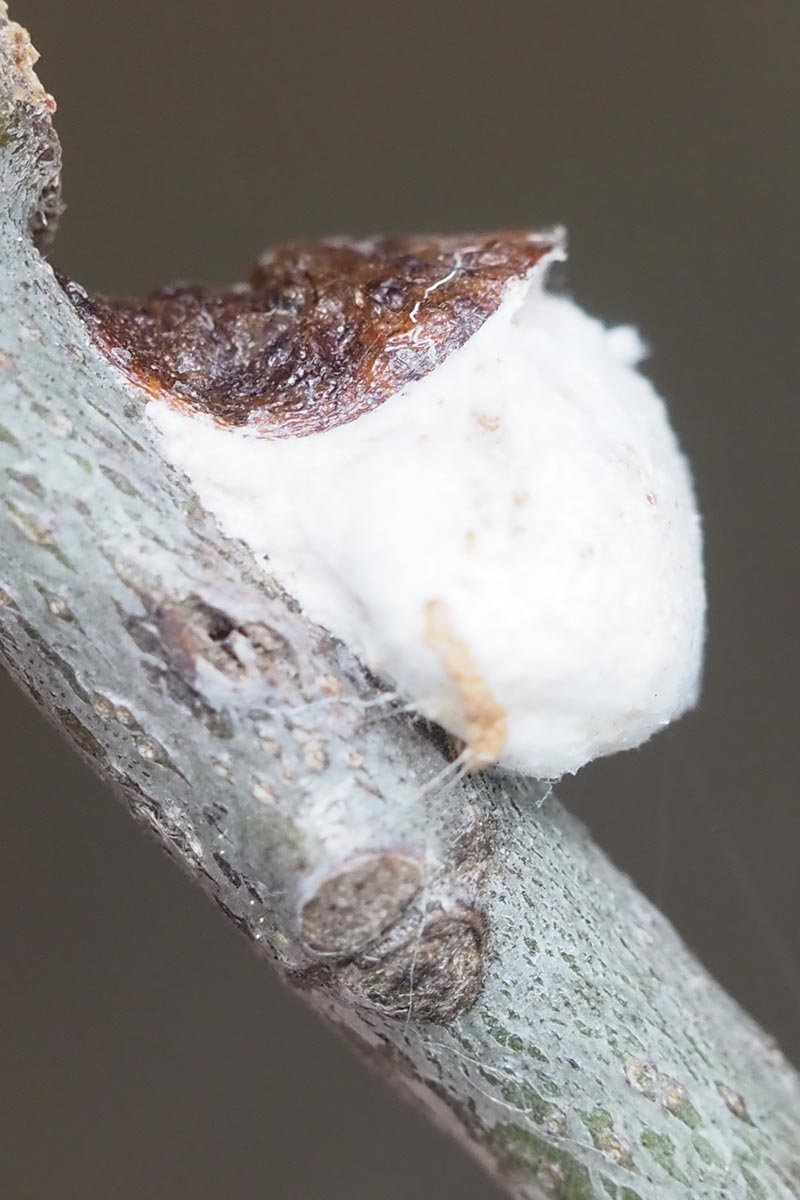
Cottony maple scale and horse chestnut scale are similar in appearance – small, flat, and brown. These insects often go undetected until the females deposit their fluffy white ovisacs on the tree branches.
Scale insects are usually just an ugly presence, but if there are significant numbers of them sucking on your tree, the leaves may turn yellow or die, and branches may die back.
Heavy, consistent feeding can kill weak trees. And these pests also produce honeydew.
Japanese maple scale insects are shaped like an oyster shell, brown in color, and often covered by a white waxy covering. As is typical of scale insects, they suck on plants to feed, which can cause twig and branch dieback, tree weakening, and a loss of vigor.
Spraying infested branches with a strong stream of water can help dislodge scale, and this is best done when the tree is dormant. Lacewings, ladybugs, and predatory wasps such as Pteroptrix chinensis can be very effective in controlling populations as well.
The adults are well protected under their hard, sometimes waxy coverings, so if you do need to use pesticides, target the juvenile crawlers before they settle and develop that impermeable covering.
Pyrethroids and systemic insecticides can be very effective against scale insects. AzaGuard can also work, which employs azadirachtin from the neem tree.
Buy Your Own Tree, Bugs!
The list of common pests that may affect Japanese maples is not too long, but it’s nothing to be sneezed at either.
Luckily, it’s very unlikely that you’d have to deal with all of these at once. And when one of these pests does appear, you’ll know what it is and how to deal with it.
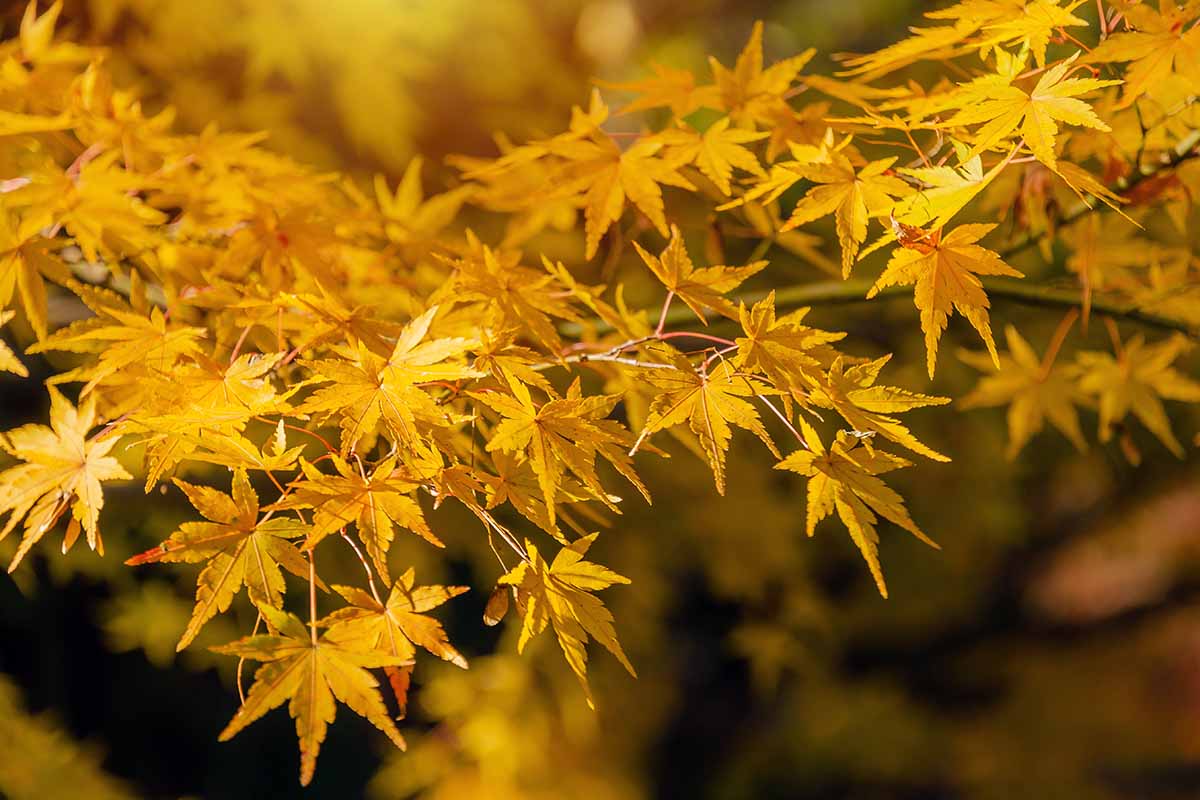
Have you ever had an insect problem on your Japanese maples? Tell us what type of pest paid your trees a visit and how you dealt with it in the comments below!
And once you’re done there, check out these guides to growing and caring for Japanese maples next:
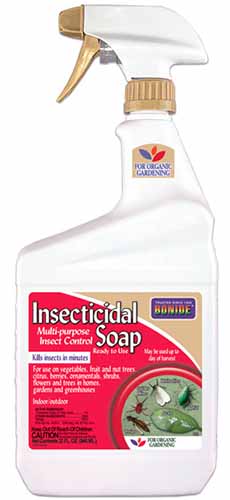
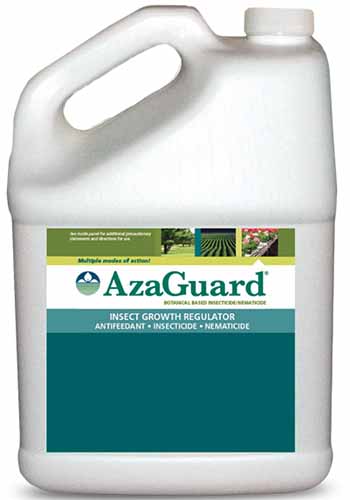
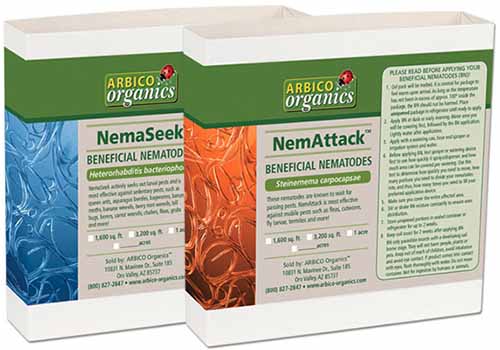
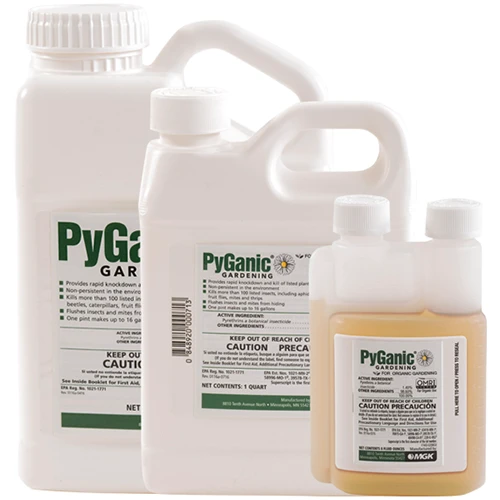
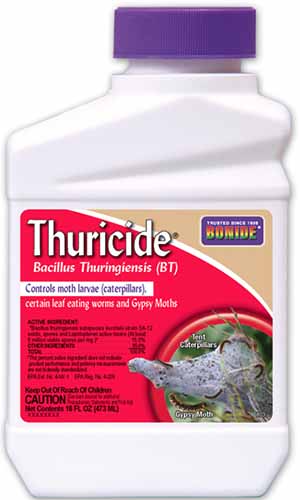
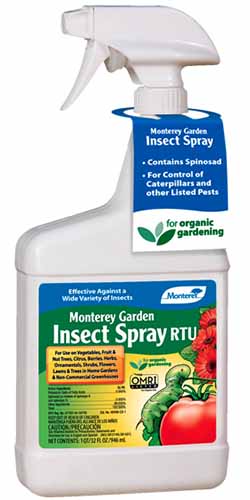
Please help. What is this on my Rhode Island Red Japanese Maple? See attached photo. What do I do?
I don’t see any signs of the bugs mentioned. I’m wondering what is wrong with my beautiful tree!!! Some of the leaves at the top look more lacy and are showing brown on them and curling up.
Hi Pati, I’m not seeing the lacy growth that you mentioned in the pictures you provided. I do see some spotting, which could be symptoms of a disease. Curling leaves could also be a disease but is more commonly due to environmental issues like underwatering, high temperatures, or high humidity. Lacy leaves are often caused by pests.
Curling, browning leaves sound like wind damage or heat damage. Have you had exceptionally high temperatures recently?
At any rate, could you provide a few close-up images of the brown, curling, and lacy leaves?
What is killing my Japanese Maple trees. I live in the HOT Central Valley of Ca. They are mostly shaded on the N side of the house. These trees are 25 yrs old and DO NOT rub against anything but have huge wounds along some branches which are dying. I see no bugs.
Hi Ben, as Alison mentioned below, the heat this year has been extreme and is harming many established trees. That said, the pattern of dead branches looks a lot like verticillium wilt, which is caused by V. dahliae in maples. Unfortunately, Japanese maples are extremely susceptible. This is the time of year when vert becomes obvious in plants, especially after extreme heat. In acute cases, a tree can go from fine to dead in a matter of months. Sadly, if it is vert, there is nothing you can do but remove the trees. You should also keep an eye on… Read more »
What TV is killing my Japanese Maple trees. I live in the HOT Central Valley of Ca. They are mostly shaded on the N side of the house. These trees are 25 yrs old and DO NOT rub against anything but have huge wounds along some branches which are dying. I see no bugs.
The climate there can be tough on Japanese maples, even when planted in the shade. While some specimens can live to be over 100 years old in ideal conditions, they may simply be nearing the end of their lifespan in your location. See our guide to maple bark diseases for some possible suggestions, and feel free to share photos of your trees there.
Hello,
Need help to identify the disease and cure. The plant is a Japanese red maple tree and looks like the leaves are infected with some pathogens, not sure fungi or insects. Please refer to the pic attached.
Best,
Zain
Hi there, it looks like your plant might have anthracnose. There isn’t one obvious symptom that will confirm this disease, but it can present this way. We cover anthracnose and how to treat it in our guide to Japanese maple leaf spot. Treatment will need to start in the spring and requires several applications of a fungicide like Bonide Revitalize.
Our fairly-newly-planted Japanese Maple (“Crimson Queen”) has new leaves that show serious depletion by, presumably, a chewing critter. Examination underleaf showed a little legged character (aphid?) and tiny white shiny ‘grub’ (?), and some dry-looking white dots, maybe ‘hatched’ grubs?
Pictures attached.
Any ideas? and treatment? If these are the culprits, there aren’t many, but the damage is severe, on its small scale.
Thanks!
Charles
Hi Charles, those definitely look like aphids, but they aren’t what is eating those holes in the leaves of your trees. Aphids suck the sap out of trees with their mouths, sort of like sticking little straws into the tree. The damage I see on the leaves looks like some kind of worm or caterpillar. Treat following the tips under caterpillars to get a handle on them. The treatment with Bt that we describe above will tackle many caterpillar species.
I just purchased and replanted this maple and have noticed this leaf with little bumps. And seems like something is munching on other leaf. Any ideas?
Hi Ashely, the first two photos and the second two look like different issues. For the first two, it looks like it might be some kind of beetle feeding. Have you seen anything out and about on your trees? Have the holes expanded since you posted these photos? Have any additional holes developed? The second two photos look like physical damage. Have any additional leaves on the tree developed the same symptoms in the past week or two? Let me know and I can offer some help.